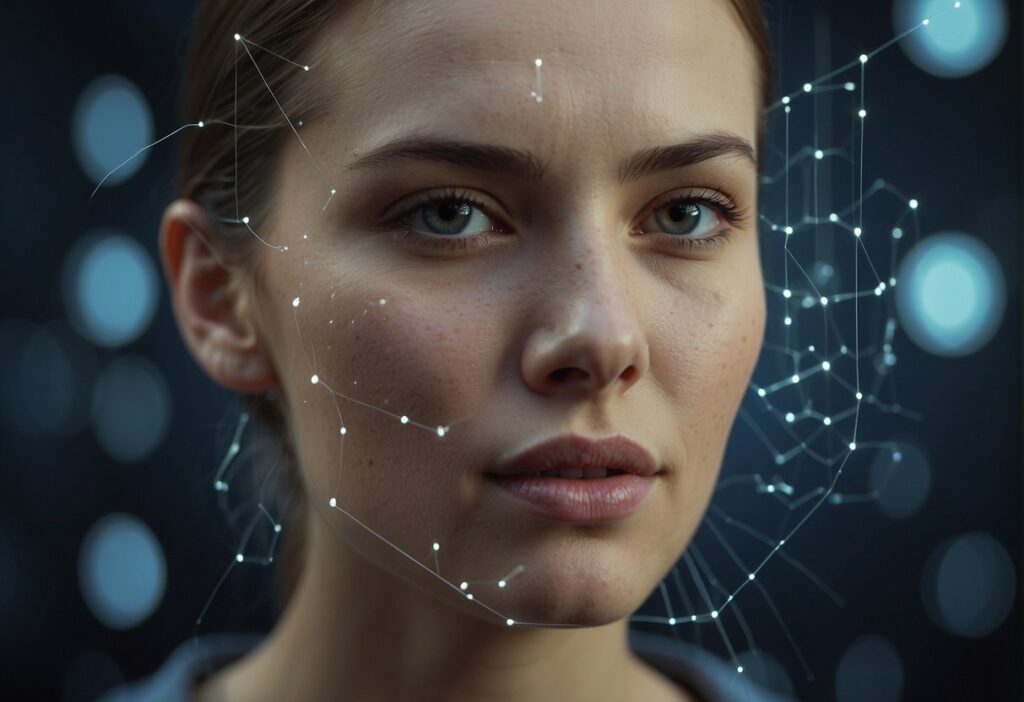The Role of Facial Recognition in Deciphering Emotional Signals: Analyzing Prospects and Hurdles

Facial recognition technology has become a pivotal tool in interpreting human emotions. It goes beyond the traditional use in security systems to now assist in analyzing subtle emotional cues which can be beneficial in areas ranging from marketing research to psychological assessments.
The accuracy of facial recognition systems has improved significantly due to advancements in artificial intelligence, allowing these systems to detect minute changes in facial expressions that correspond with a plethora of emotional states.
However, the use of facial recognition for emotional analysis is not without its challenges. Concerns regarding privacy, the possibility of misinterpretation, and the ethical implications of emotion detection without consent are increasingly prominent. These issues necessitate a careful balance between leveraging the potential benefits of the technology and respecting individual rights.
In exploring the opportunities presented by facial recognition in the realm of emotional understanding, it is also crucial to address the limitations and responsibilities that come with its application. The technology has the potential to revolutionize how emotions are understood and interacted with in digital spaces, but it demands a thoughtful approach to ensure it serves the best interests of society.
Fundamentals of Facial Recognition

Facial recognition technology bridges the gap between machine perception and human-like understanding of emotions and identity. This technology has advanced significantly over the years, becoming integral in various applications that require nuanced recognition of facial features and expressions.
Technological Mechanisms
Facial recognition systems operate by identifying and measuring facial features from a digital image or video frame. The process involves several key steps:
- Detection: The system locates human faces within a visual scene.
- Alignment: Once detected, faces are aligned to ensure consistent analysis.
- Feature Extraction: It identifies distinguishing facial landmarks — such as the distance between the eyes or the shape of the jawline.
- Comparison and Matching: The extracted features are then compared against a database to find a match or to store new data.
Modern systems apply complex algorithms and deep learning methods, especially Convolutional Neural Networks (CNNs), which have dramatically improved accuracy and speed.
Emotion Recognition Basics
The subset of facial recognition technology that assesses and interprets emotions is known as emotion recognition. This involves analyzing the micro-expressions — transient expressions that occur within a fraction of a second — and other facial cues to determine a person’s emotional state. Key aspects of emotional recognition include:
- Micro-Expressions: Brief, involuntary facial expressions that reveal true emotions.
- Macro-Expressions: More prolonged and voluntary expressions.
Systems utilize a range of emotional categories like happiness, sadness, anger, surprise, disgust, fear, and neutrality. They associate specific facial muscle movements, identified through Facial Action Coding System (FACS), with these emotions to understand the subject’s state of mind.
Applications of Facial Recognition in Emotional Analysis

Facial recognition technology has made significant strides in interpreting human emotions, which is now applied across various sectors. These applications are enhancing service delivery, personalizing user experiences, and contributing to safety.
Healthcare Innovations
In healthcare, facial recognition is used for patient monitoring to identify pain levels and assess emotional well-being. This technology aids in detecting mental health indicators by analyzing facial expressions, which can be invaluable in psychiatric evaluations or monitoring patients with conditions such as depression or PTSD.
Customer Service Enhancements
Customer service benefits from facial recognition by gauging client satisfaction through emotional cues. Real-time analysis of customer reactions enables representatives to adjust their approach, improving the service quality. For instance, if a customer displays signs of confusion or dissatisfaction, the representative can take immediate action to address concerns.
Automotive Safety Advances
The automotive industry incorporates facial recognition for driver safety by monitoring signs of fatigue or distraction. By analyzing a driver’s facial expressions and eye movements, the system can alert them or even take corrective measures to prevent potential accidents.
- Example: A vehicle safety system can initiate an alert or slow the car down if the driver’s eyes close for a prolonged period.
Marketing and Advertising Insights
In marketing and advertising, understanding consumer reactions to products or campaigns is crucial. Facial recognition allows marketers to gain precise insights into the emotional impact of their content, enabling them to fine-tune their strategies.
- Insight Example: A smile or a surprised look when viewing an advertisement can signal positive engagement, which marketers can quantify to assess the ad’s effectiveness.
Ethical Considerations and Privacy Concerns

Facial recognition technology’s application in understanding emotional cues raises significant ethical considerations and privacy concerns that need to be carefully managed to ensure responsible use.
Consent and Data Security
Consent is critical when it comes to collecting and using facial data. Individuals must be informed about how their data will be used and must grant explicit permission. Data security also plays a fundamental role in protecting personal information from unauthorized access or breaches. The adoption of stringent data encryption and secure storage practices is non-negotiable to maintain trust and comply with privacy regulations.
Bias and Fairness
Instances of bias in facial recognition algorithms can result in unfair treatment of certain groups, particularly if the technology has not been trained on diverse datasets. Efforts to mitigate bias should include regular algorithm audits and the implementation of fairness metrics to ensure equitable treatment across all demographics.
Regulatory Perspectives
Different countries have varied regulatory frameworks that govern the use of facial recognition technology. It is essential for entities deploying this technology to stay abreast of data protection laws and individual rights within the jurisdictions they operate. Companies must navigate a complex landscape of compliance to maintain ethical standards and uphold privacy rights.
Technical Challenges and Limitations

Facial recognition technology faces several technical obstacles that impact its utility in reading emotional cues. These include concerns about consistent performance across diverse scenarios and populations.
Accuracy and Reliability
The precision of facial recognition systems in detecting emotions is not uniform. Factors such as lighting, facial orientation, and expression intensity influence accuracy. For example,
- Lighting: Poor illumination can lead to incorrect emotion detection.
- Facial Orientation: Angles at which the face is presented may result in misinterpretation.
Systems also differ in reliability – the ability to deliver stable results over time. Variability in performance raises concerns about their dependability in critical applications.
Environmental Factors
Facial recognition technology is subject to the influence of the surrounding environment, which can impede its effectiveness.
- Illumination: Inconsistent lighting can alter the appearance of facial features.
- Background: Complex backgrounds may distract algorithms from correctly identifying faces.
Cross-Cultural Variances
The interpretation of emotions through facial expressions is not universal. Variations across cultures pose significant challenges for facial recognition systems. The table below lists examples of these variances:
| Culture | Emotion | Expression Variance | Potential Misinterpretation |
|---|---|---|---|
| Western | Happiness | Broad smile | Universally recognized |
| East Asian | Happiness | Subtle smile | Could be mistaken for neutrality |
Differences in expression and emotional display norms necessitate the development of culture-sensitive algorithms to improve the global applicability of this technology.
Future Directions and Research

The evolving landscape of facial recognition technology holds promise for enhanced emotion detection capabilities. Robust research initiatives are imperative to address the current limitations and harness the full potential of this technology.
Algorithmic Improvements
Efforts to refine facial recognition algorithms are crucial. Accuracy and bias reduction are the primary focuses. Researchers aim to develop algorithms that:
- Recognize subtle emotional differences with greater precision.
- Are trained on diverse datasets to avoid ethnic, gender, or age biases.
Expansion into New Industries
Facial recognition’s application is widening beyond security, with growth anticipated in:
- Healthcare – for assessing patient pain levels.
- Retail – tailoring customer experiences by gauging satisfaction.
Each new industry presents unique data interpretation challenges that must be navigated carefully.
Integration with Other Technologies
Merging facial recognition with other technologies could enhance overall understanding of emotions:
- VR/AR: to create immersive environments that respond to users’ emotional cues.
- Wearable Devices: for real-time emotional health monitoring by syncing with facial recognition.
The integration demands careful consideration of privacy and ethical standards to safeguard individual rights.

